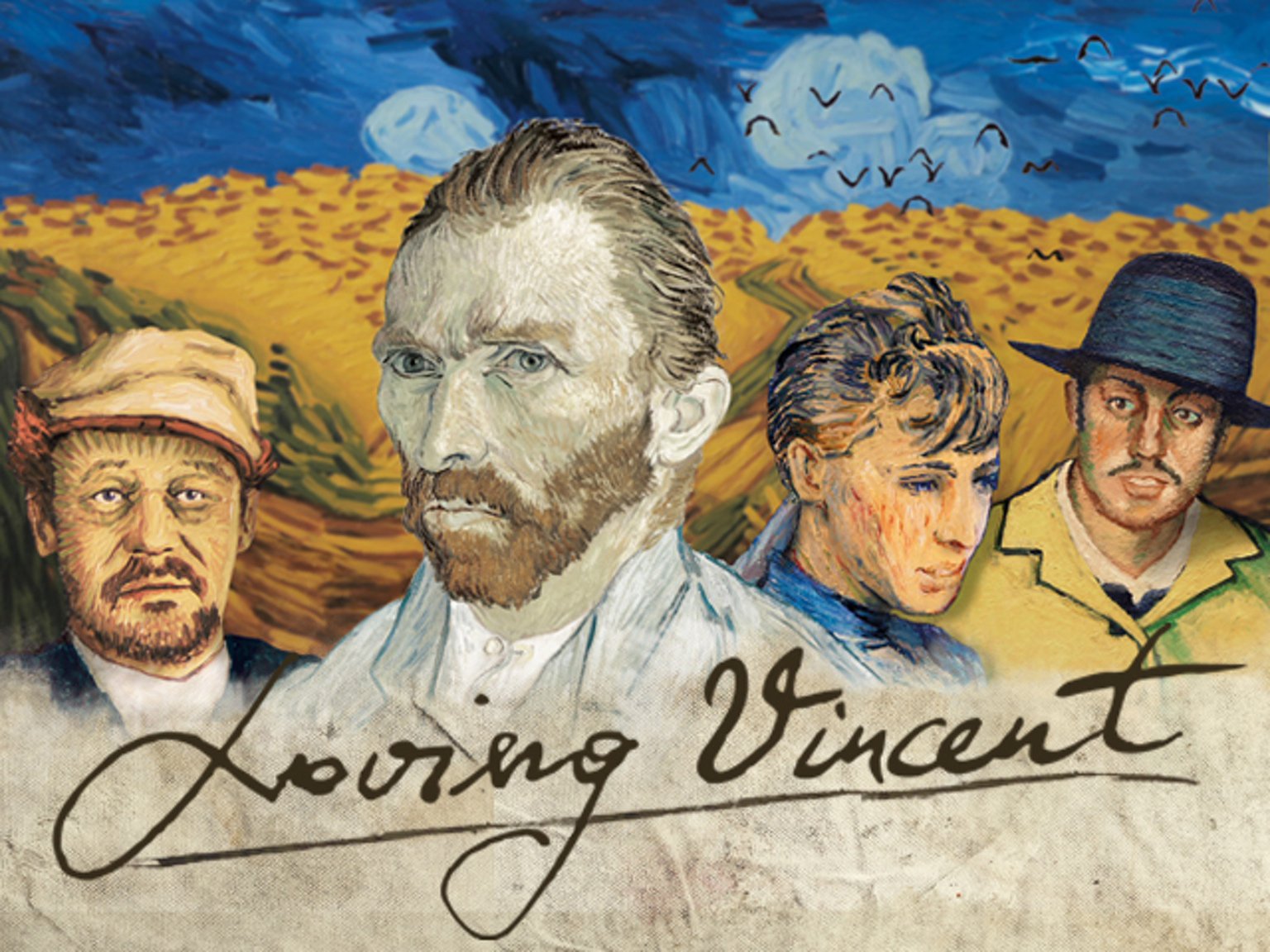Loving Vincent is directed by Dorota Kobiela and Hugh Welchman, and stars Douglas Booth, Jerome Flynn, Saoirse Ronan, Helen McCrory, Chris O’Dowd, John Sessions, Eleanor Tomlinson, and Aidan Turner.
Loving Vincent is set in 19th century Europe, in the year following the death of artist Vincent Van Gogh. Postman Roulin, a friend of Van Gogh in his life, requests that his son Armand deliver a letter to Vincent’s brother, in the village where Vincent was found dead. Reluctantly, he heads to the village, where he quickly finds himself getting caught up in the mysteries involving Vincent’s death, and the varied perspectives of the townspeople, all of whom have their own stories to tell.
Loving Vincent is a film that will immediately capture its viewer with the unique art style of hand-painted animation, done in the style of Van Gogh’s artwork; there have been many unique animated films before over the years, but this one sets and new and interesting standard unlike anything that has come before. And while the narrative does get a bit overblown and convoluted at time, the experience is a solid one overall.
Over a hundred artists worked on the film’s individual frames, of which the movie has over 60,000. The decision to opt for classically-trained painters over traditional animators works in the film’s favor; every frame is quite literally a work of art. The film also uses a simple yet effective technique to differentiate between the present and flashbacks, by having flashback footage in black and white.
The main narrative of Loving Vincent revolves around Armand going around the village in which Vincent passed away, talking to those that knew and encountered him, getting their varied stories, which often differ substantially. This gives the film an element of Citizen Kane and Rashomon, although it never quite manages to reach the level of storytelling reached by those cinematic classics. That said, it does put an interesting spin on what could have been a generic “Point A to Point B” investigation. Even Armand, initially indifferent to Vincent’s plight, quickly finds himself caught up in the mysterious circumstances at hand, which keeps us an audience interested. The film, admittedly, has a few too many secondary/tertiary characters so the investigations/storytelling gets a little out of hand and overblown at times, but fortunately it never quite derails the experience.
Minor narrative issues aside, Loving Vincent will win audiences over with its tale of a legendary artist’s final days and the aftermath, but it is the art style that is truly the star of the show here. This film is a sight to behold, and definitely worth your time.
Rating: Three out of four stars.
DISCLAIMER: All images in this review are the property of the respective copyright holders. For promotional use only. All rights reserved.


